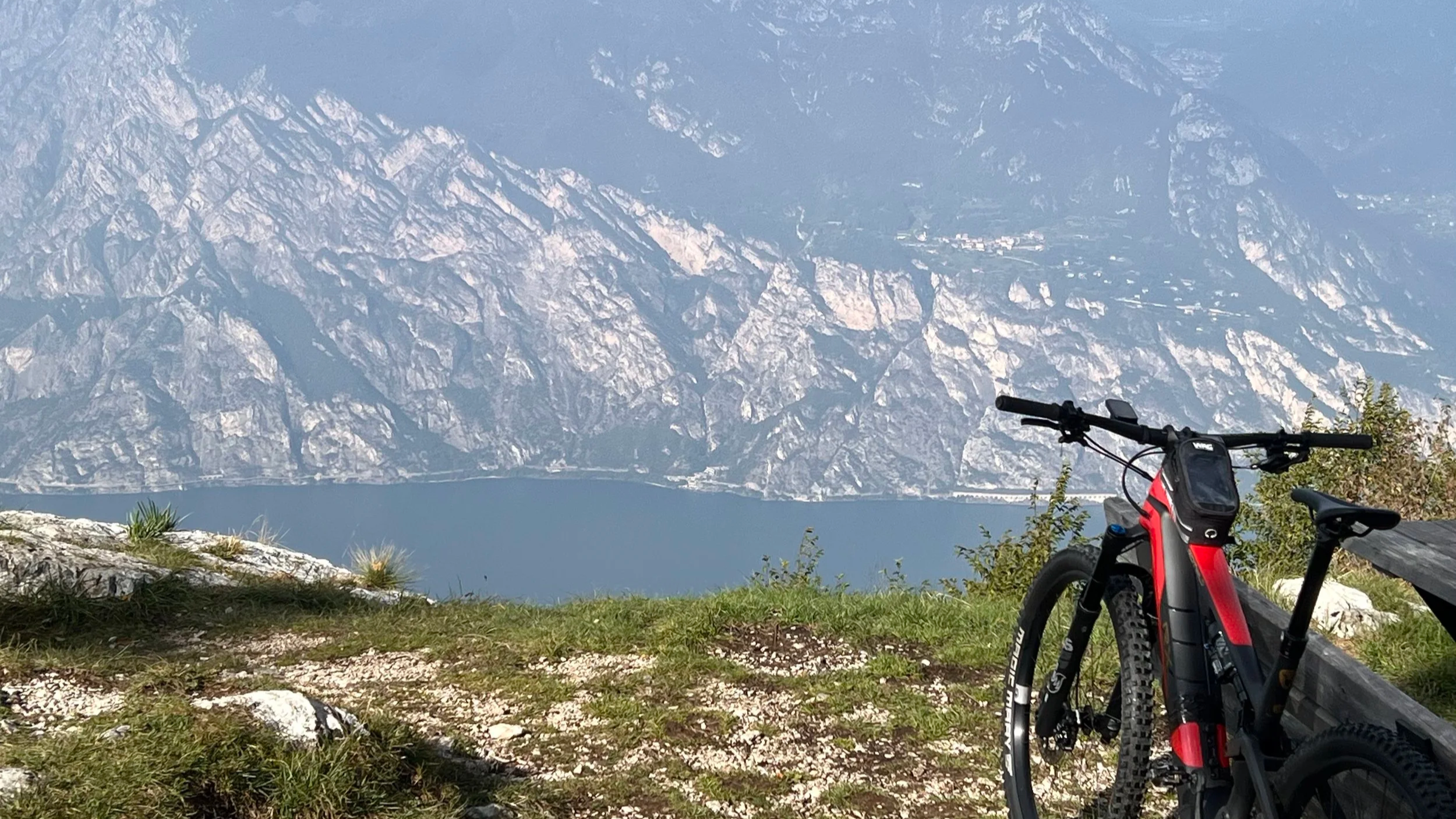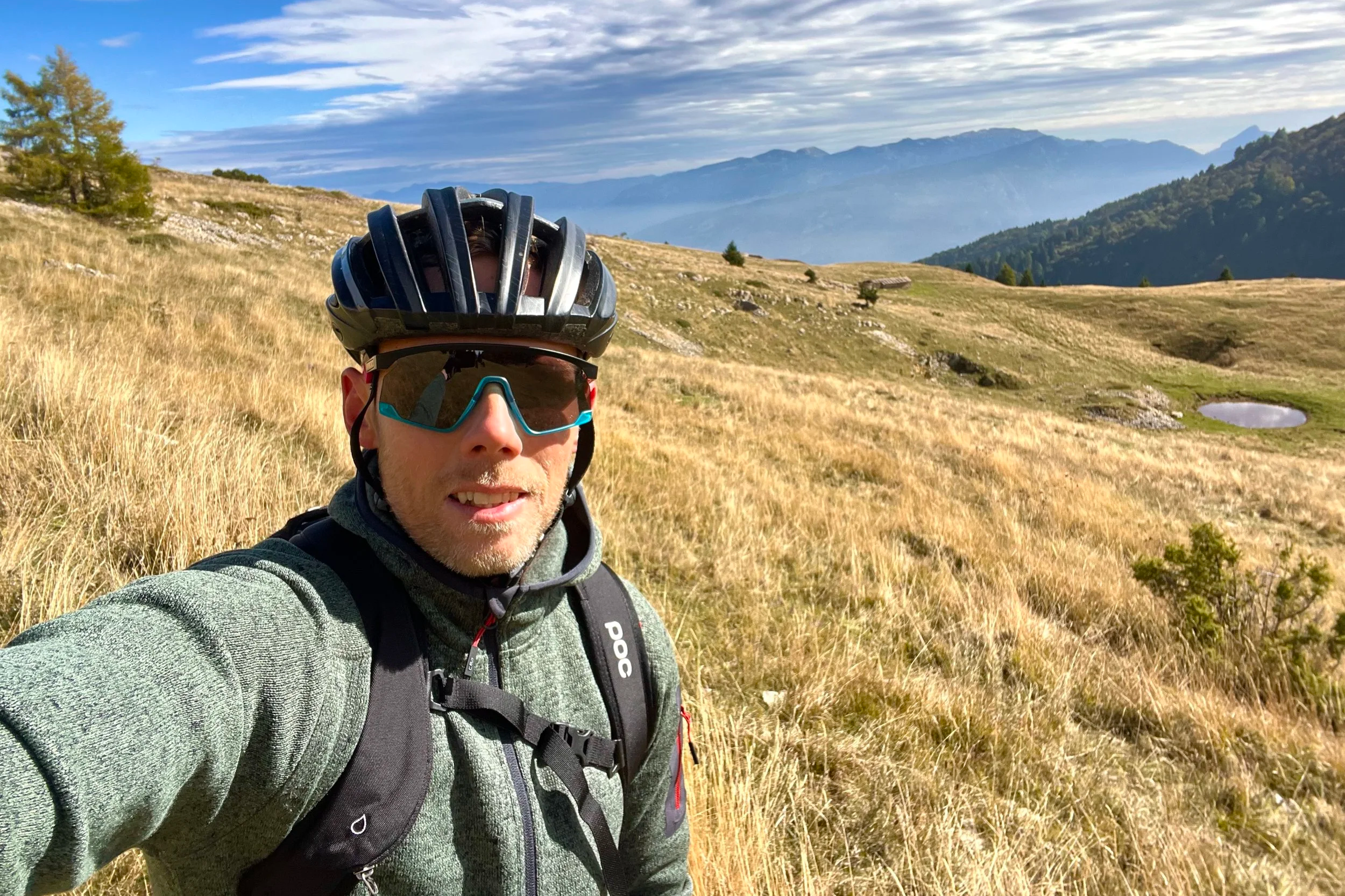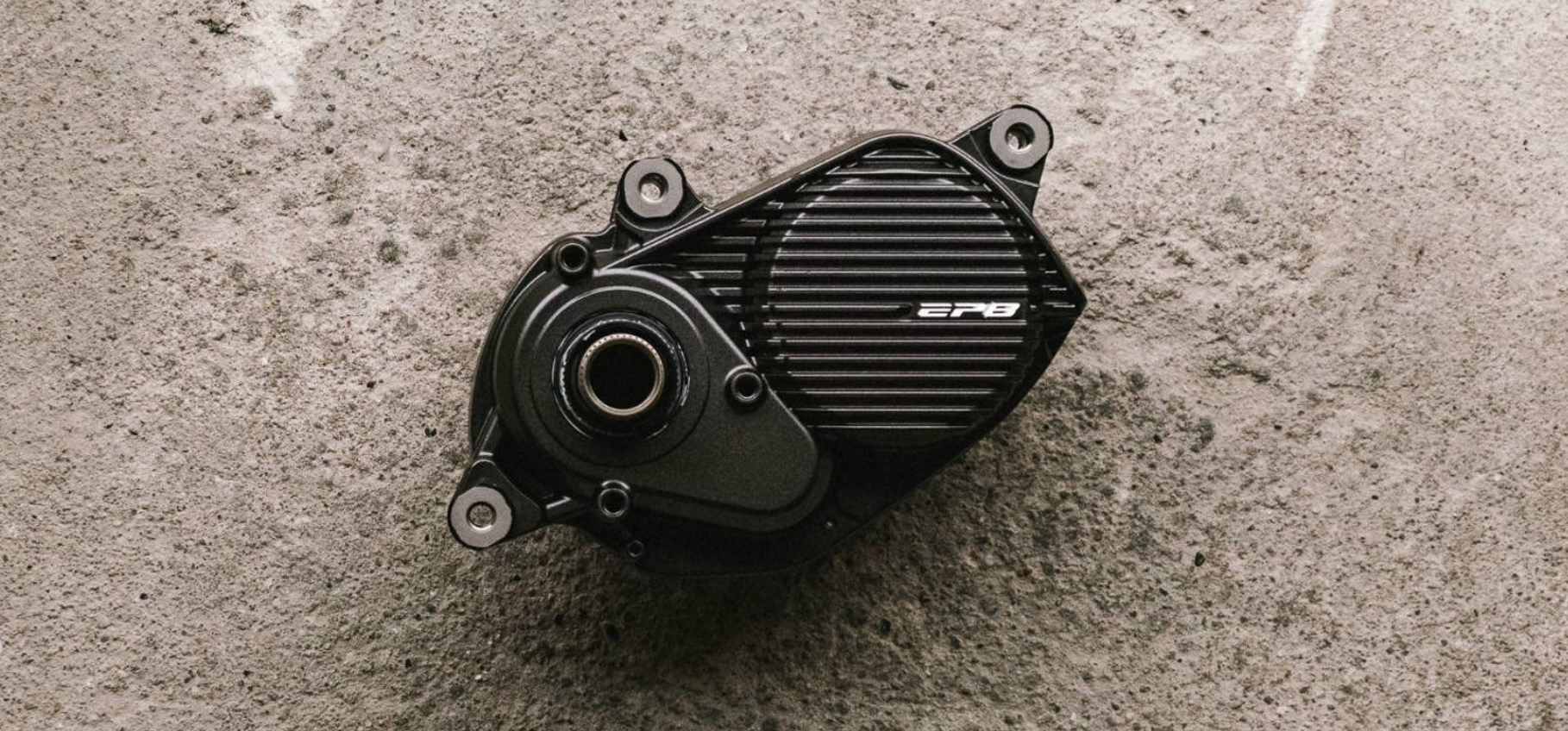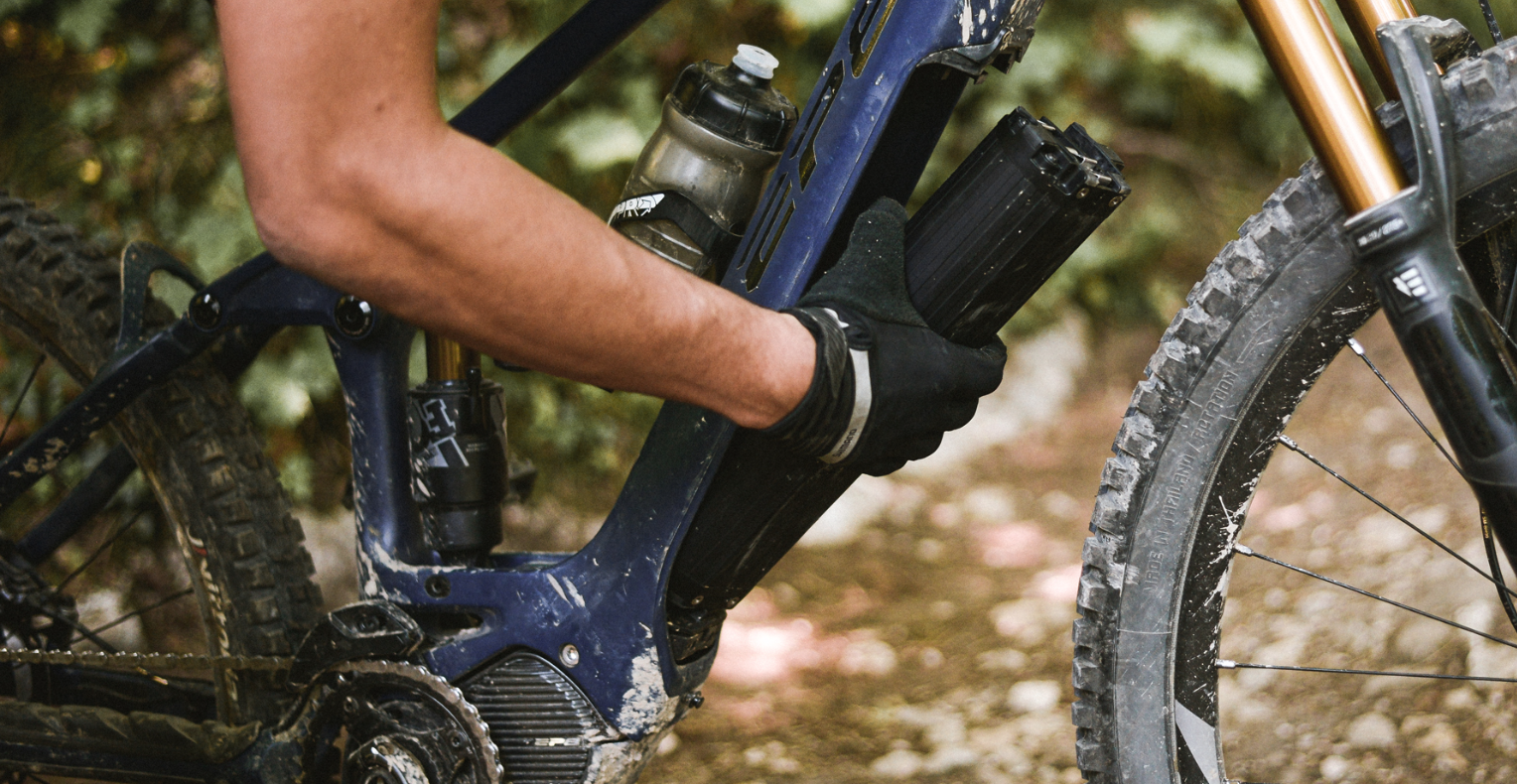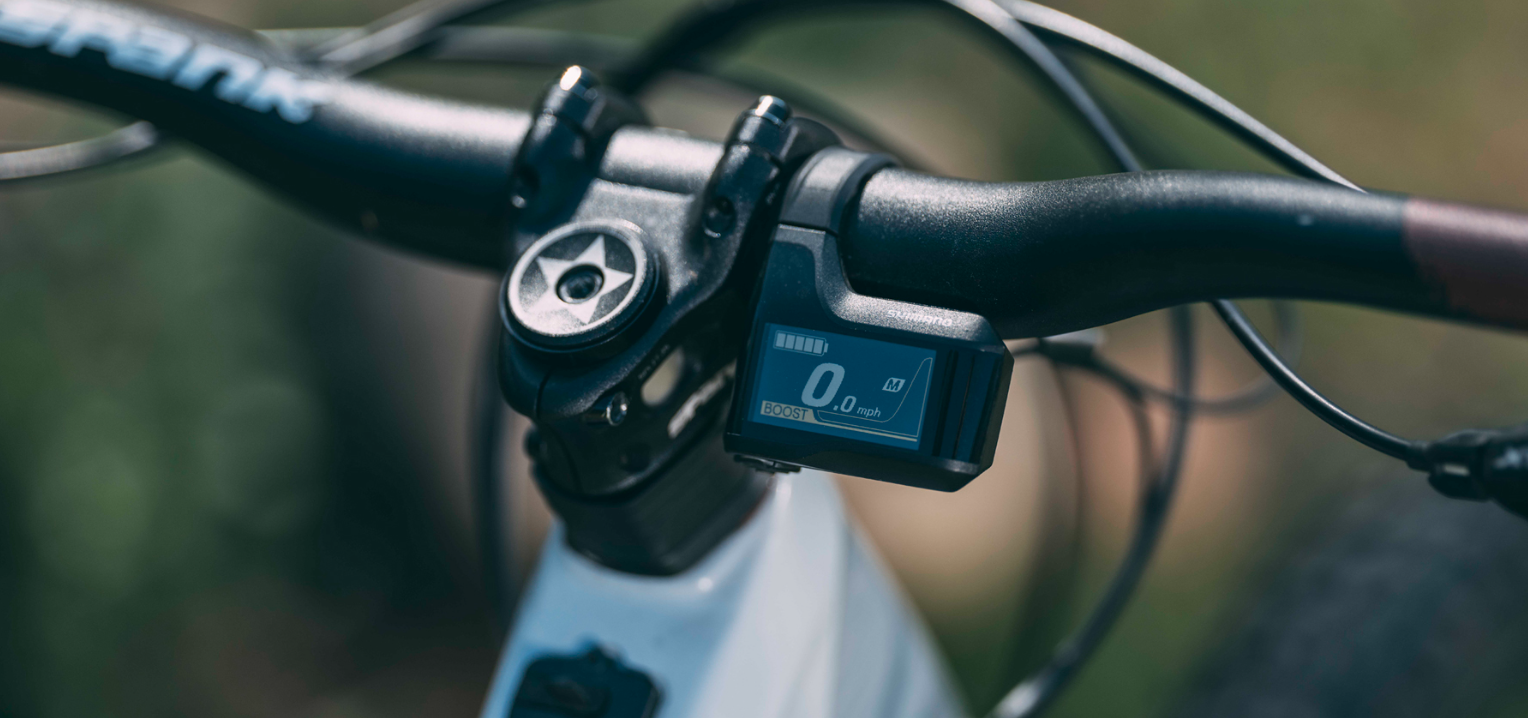Taking Neverempty to Trento (IT) for Some Real Life Action
For any e-MTB rider, there’s a persistent, nagging question that haunts every long ride: "Will I make it back on a single charge?"
We’ve all been there: nervously checking the battery percentage on a long climb, dialling the assist down to "Eco" when you know you still have miles to go, and maybe even feeling that terrifying, soul-crushing moment when the battery finally dies, leaving you to push a 25kg bike up a mountain road.
That constant anxiety isn't part of the fun. It takes your focus off the breathtaking views, the flow of the trail, and the pure joy of the ride.
This is the problem we set out to solve with Neverempty, the smart route-based battery management app for e-MTBs. But an app built behind a desk can only be truly validated one way: in the wild.
So, two weeks ago, I packed my gear, the MVP of the Neverempty app, and headed straight for the heart of European (e)mountain biking: Lake Garda, Italy.
The goal was simple but daunting: confirm the idea, validate the math, and see if Neverempty could truly kill range anxiety on the challenging terrain.
From Theory to Trail: Why we chose Torbole, Lake Garda
Building an app in our native Estonia, where "climb" means a 100m long slight incline, gives you an idea of our limitations. We needed real mountains, real ascents, and real routes that would push a battery to its limit. Torbole, with the towering peaks of Monte Baldo and the sheer drops overlooking Lake Garda, was the perfect proving ground. The north shore of Lake Garda is a hugely popular destination for e-bikers of all kind, so if it works there, it should work anywhere.
The rides we tested were no joke. Over four days, I tackled:
The Monte Velo Trail
The Bocca Fortini Tour
The Challenging Monte Baldo Tour (Twice!)
Each ride averaged between 1300 and 1500 meters of elevation gain, winding through challenging gravel roads, technical singletrack, and stunning woodlands. The autumn air was crisp (around 10−15∘C), and the views were non-stop.
For every single route, the process was the same:
Upload the GPX file of the planned route into the Neverempty app.
Allow the app to calculate the required energy based on the distance, elevation profile, and my initial battery level plus all the riders info.
Connect the app to the e-bike’s control module via Bluetooth.
Hit the trail and let Neverempty take the wheel (or rather, the assist).
The MVP’s Moment of Truth: Automatic Assist
The core feature we went to Italy to test was the automatic assist adjustment.
Before Neverempty, every rider is forced to manually calculate when to use "Eco," "Trail," or "Boost." It’s a constant, distracting mental balancing act especially if you know you’re going to consume a lot of battery.
With the MVP connected, I set my desired battery safety margin, and the app began automatically adjusting the assist level in the more granular 1–7 level mode (my rental bike was equipped with Shimano EP801 and a 720Wh battery).
The Unexpected Revelation
I had tried the app briefly back home, but the difference on a real mountain was night and day. What surprised me the most was how smooth and intuitive the automatic assist felt.
The app did all the thinking—analyzing the current gradient, anticipating the upcoming climb, and instantly dialing in the optimal level of power needed to keep me on pace while ensuring the battery lasted exactly as long as the route demanded.
I could just enjoy the ride (and the views).
On the first Monte Baldo run, I finished with an empty battery (died about 10km too early). On the second run, I adjusted the app's internal settings to be slightly more conservative and at the same time pore precise regarding the start’s and end’s of the climbs. The result? The ride felt even smoother, the power delivery was more subtle, and the battery life extended further, meaning I finished the same route with some % left int the battery. I stopped worrying about running out of battery and started focusing entirely on the ride, the trail, and the breathtaking views. The app moved the entire mental load from my brain to its processor.
What We Learned: The Good, The Bad, and The Beta
Testing an MVP isn't about everything working perfectly; it's about finding out where it breaks and why.
The Successes:
Seamless Connectivity: The initial setup and connection to a new bike via the Comodule module worked perfectly "out of the box." To be clear: our current MVP is only working with a e-bike equipped with the latest Shimano motors (EP8 and EP6) with and addition of Comodule module.
Minimal Phone Drain: We were worried about the phone battery. After 4 hours of riding and recording, my iPhone battery only dropped about 35%. This is great news for riders concerned about their phone dying mid-ride (and before the bikes battery). Can confirm that there is no scenario where your bike’s battery will outlast your phones.
The Core Concept is Valid: The experience of simply riding, knowing the power is being managed automatically, is a game-changer, especially on longer rides in “unfamiliar” places. It eliminates range anxiety and allows for a much more focused, joyful experience.
The Mandatory Improvements (Where We Ran Empty):
Testing is about pushing the limits, and we found them. I did run out of battery a couple of times, which confirmed two critical areas for development:
More Conservative Calculations: The math needs refining. We need to add more conservative buffers to our consumption algorithms to account for unforeseen variables and ensure the rider never truly runs out.
The "Power Saver" Panic Mode: We must build a dedicated "Battery Saver" or "Low Power" mode. This mode will kick in when the battery level gets critically low, automatically reducing the max assist ceiling to the bare minimum required to limp home, prioritizing distance over speed.
The Key Technical Dilemma: Power vs. Time
The trip also surfaced a major technical question we need to solve before the BETA launch:
What drains the battery more: a weak rider going slow with low power for a long time, or a strong rider going fast with high power for a short time?
This sounds simple, but solving this riddle is key to making Neverempty's predictions accurate. We need to figure out if providing high power for a shorter duration consumes more or less energy than providing low power for a longer duration. This will dictate how aggressively or conservatively the app manages power on various gradient profiles. for various level of riders.
Are You Ready to Never Run Empty?
The trip to Lake Garda was a success. It validated the core idea of automated, route-based battery management and gave us a crystal-clear roadmap for the final stretch of the development. We know exactly what to build next to move from a working MVP to a market-ready app.
Now, we need you.
We are actively preparing for our BETA program, which we hope to launch by the end of the year. We are looking for riders like you—e-MTB enthusiasts who tackle a variety of routes, bikes, and challenges—to help us confirm how the app works for different riders on different routes. Your feedback will be essential in perfecting those battery consumption calculations.
NB! You need to have an e-bike with the latest generation of Shimano systems: EP8 or EP6.
If you’re ready to stop worrying about range anxiety and start focusing on the ride, we invite you to be one of the first to experience the future of e-MTB riding. Go sing up on https://www.neverempty.app/ or drop us an e-mail at info@neverempty.app
Ride safe!
Power vs Battery
Electric mountain bikes (eMTBs) are often marketed on headline numbers: “XXX Nm torque”, “Peak power: YYY W”, “Unleash your climb”. And yes—those are attention-grabbers. But how often do they really matter in your everyday rides? More importantly: at what cost (weight, battery drain, price, etc.)? What riders actually want (and need) — battery capacity, power delivery and efficiency beat raw torque more often than not.
What Actual Riders Say
From E-MOUNTAINBIKE’s 2024 eMTB Reader Survey and 2025 Trend Poll (https://ebike-mtb.com/en/2024-emtb-reader-survey-and-trends-2025/), when asked what they want most from a motor, riders ranked “natural ride feel, efficiency, and low noise higher than “maximum torque” or “maximum power”. In usage, the most used support modes are the mid-to-moderate support settings - Trail/eMTB or Tour. Only ~5–7 % of riders make “Boost” or full-power their go-to mode. Regarding battery capacity about 60 % are riding bikes with 600-800 Wh capacity. And about 40% are using close to 75-100% of the batterys capacity on a averaga ride.
Why Max Power / Max Torque Is Over-Emphasized
Diminishing returns
After a certain point, more torque or power gives you less marginal benefit. If your bike already has enough torque to climb the steeper trails you ride, more torque won’t make climbs much easier—but it will cost in terms of weight, cost, battery drain, and possibly ride feel (harsh power hits, wheel spin, etc.).Real-world usage is moderate
As data shows, riders mostly use mid-range support modes. They rarely run full-power all the time. That means the motor’s behaviour in those moderate modes (how smooth it is, how well it delivers torque vs. how it wastes energy) matters much more than its peak specs.Weight & design trade-offs
To handle higher torques (and power), bikes often need stronger (thus heavier) components, reinforced frames, heavier motors or cooling, stronger drivetrains. That extra mass works against climbing and draining the battery more quickly.Battery drains fast in high power modes
High torque/power implies high current draw, which in turn drains battery much faster (especially in steep climbs, technical terrain). The same battery will give you much less range if you ride aggressively in full power vs. more moderate, efficient modes.
Why Bigger / Better Battery Matters More
Range & flexibility
A larger battery (or more usable battery capacity) gives you more flexibility—longer rides, more vertical gain before needing to recharge. Most riders want to finish the ride, not worry about running out of battery.Efficiency is king
If your motor delivers smooth torque, good power curves, efficient electronics, and you ride in support modes intelligently, you get more usable range for the same battery size. Better torque management, smoother power delivery, lower losses from friction, heat, etc., allow you to “stretch” your battery farther than simply having more peak torque which might go unused.Real-world constraints
Weight of battery, charging time, battery durability, pack configuration (integrated vs removable) matter. A big battery that’s badly integrated or weighed down by a heavy motor ends up hurting more. Conversely, a reasonably sized battery with good real-world range and smart assistance modes yields better everyday satisfaction.Desire for features like range extenders / fast-charge
Usually riders prefer options like range extenders (for when battery gets low) and fast charging rather than simply more Nm. It’s about staying on the trail longer or reducing “ankle-biting” battery anxiety.
Why Most Riders Don’t Need More Torque but Better Control of Existing Torque
Most trails and terrains people ride on don’t require “monster torque”. Moderately steep grades, mixed terrain, singletrack—none of these typically demand the maximum torque numbers shown on spec sheets (unless you’re racing, doing shuttle laps, or hauling heavy loads).
What does matter is how the torque is delivered: is it smooth, controllable, predictable? Does the motor’s control system allow gradual build-up, or is it jerky when you open the throttle or switch support modes? Ease of modulation makes a big difference for traction, confidence, and efficiency.
Rider weight, tire grip, suspension setup, and overall bike weight often make as much or more difference than raw torque. If you have a 25-kg eMTB and a huge battery but poor setup or heavy wheels/tires, you might actually suffer more inefficiencies than someone on a lighter bike with moderate torque but a well-matched battery.
Psychological effect: knowing you have reliable performance (range, consistent assistance, low battery drain) builds confidence. Chasing Nm might give bragging rights, but if your battery dies halfway up a climb or you have to avoid steep terrain because of battery limitations, that’s far worse than having “just enough” torque.
What Most Riders Prefer: Range Over More Nm
Riders overwhelmingly value being able to ride longer and further without worrying about charging or running out of battery.
Many would rather accept “only” 80-90 Nm (or whatever is adequate for their terrain) in exchange for more usable watt-hours, lighter weight, better support modes, and more predictable performance.
Range extenders, fast charging, incremental improvements in motor efficiency get more votes (real, actionable utility) than incremental gains in max torque.
Conclusion
Power (torque / peak wattage) sells well. It looks great on a spec sheet. It gets headlines. But for the average rider, more important is how you use what power you already have, how efficiently it is delivered, and whether your battery supports your riding habits.
If you're choosing between two bikes and one has slightly more max Nm but much worse battery or heavier weight, chances are the latter will underperform for your needs.
If you can get a motor that delivers good mid-range torque, smooth delivery, moderate weight, and pair it with a well-sized battery (say ~600-800 Wh), you'll get more satisfaction and fewer trade-offs.
At the end of the day, most riders would rather have more range, better control, quieter operation, and more reliability than raw torque. Because if your battery dies high up, or you have to constantly charge, or the ride feels jerky—you won’t care what the power spec said on day one. And don’t forget the 25km/h compulsory speed limit:)
